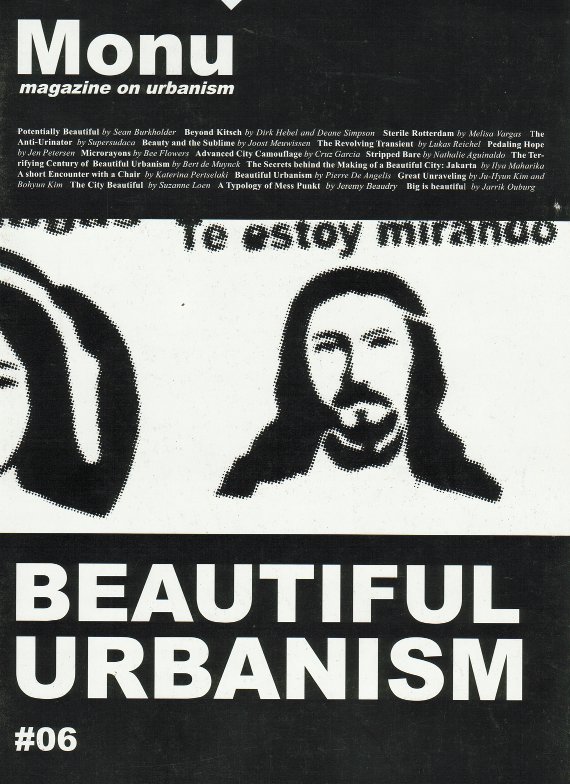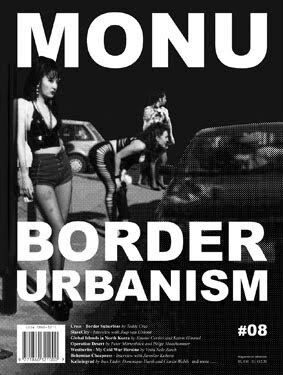
MONU #06
availability unknown, if interested please write an email
MONU - magazine on urbanism is a unique bi-annual international forum for artists, writers and designers that are working on topics of urban culture, development and politics.
Each issue collects essays, projects and photographs from contributors from all over the world to a given topic. Thus MONU examines topics that are important to the future of our cities and urban regions from a variety of perspectives.
Even though the concept beauty remains elusive we think our issue is successful in shining some spotlights on the issue. One of the themes from the articles is that beauty in urbanism is what one could call an emergent quality. It rarely is in the object itself. It exists in the way we perceive spaces and objects, our vantage point. It is while wandering though the city, resolving contradictions, when we see things that jolt our imaginations that we experience beauty. It can be a small detail such as obscure dots on the sidewalk that German civil engineers place all over the city to measure which propel Jeremy Beaudry along daydreaming trajectories as he assembles the dotted pattern of Berlin. Movement plays a central part, be it by bicycle as Jen Petersen describes or in future cable cars that Lukas Reichelt invents. Or within 30 years high resolution and real time aerial photography will open yet another facade of the city to our perception – the view of the roofs as Ju-Hyun Kim and Bohyun Kim predict. But if it is not all just in our minds then there are some important tools for those who do care about who and what it is that is built and declared beautiful – or left for us to find the beauty in. How much leverage do we really have to imagine or stamp that which is beautiful – if we must resolve ourselves between a complete rejection of the sorts of beauty that seems to have many followers – Disney architecture for example – to a naïve embracing of 30m high cowboy boots? Can we go truly Beyond Kitsch as Dirk Hebel and Diane Simpson suggest? Does the striving for a generic sense of beauty bear even more serious repercussions as Ilya Maharika argues in his study of Jakarta?
Language: English






